Notre Dame Tower
It really is a must to visit Notre Dame Cathedral.
Read
these pages that were written before the fire of April 2019.
The restoration is ongoing until 2025, despite the opening on schedule in 2023,
but still
go there and pay your respects to a grand lady much loved in the world.
Archeological finds from after the fire
Read here about some of the finds from the archeological digs allowed for a brief period during the restoration.
Is it worth the climb to the top
of the Notre Dame Tower in Paris?
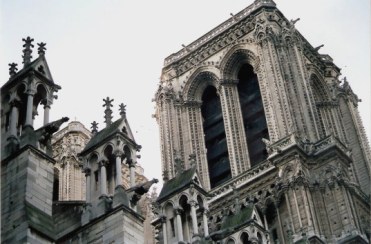
The Notre Dame Cathedral Tower: Is it worth the climb?
YES. It WAS worth it, even though it meant climbing 387 steps.
Climbing these steps, one tends to be asking the Good Lord to help you get to the top without expiring. At about step 236, a wry quote came to mind that has been attributed to someone whose last name has particular appeal to me, Sam Redwine, Jr.:
Software and cathedrals are much the same -
first we build them, then we pray.
This quotation has particular relevance to me, having worked in leading global IT transformations where on occasions, this may well have been the mantra.
How to book tickets
for visiting Notre Dame Cathedral in Paris
The tower restoration being stiull underway climbing to the towers of Notre Dame will not be possible until the summer of 2025. No date has been announced.
This is where you can book your visit ahead of time, and no doubt will be able to do so for the Tower when it opens again.
Before the current system was in place, there was a human intervention in assigning the number of people allowed to climb the cathedral tower, and it was just as closely monitored, as will no doubt be the next.
Once on the tower ramparts, I would have liked to have had time to really focus on the timbered house behind this square, or the more simple church in the park beside, but there we had no time to linger.
Another group was upon fast on our heels and we were shepherded onwards.
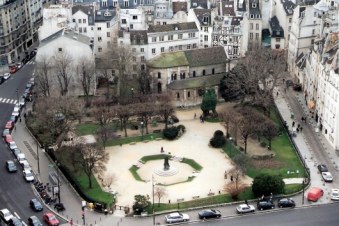
Paris from the Notre Dame Tower:
spectacular views
Far in the distance there was the Sacré Coeur,
and in the foreground, orderly rows of buildings.
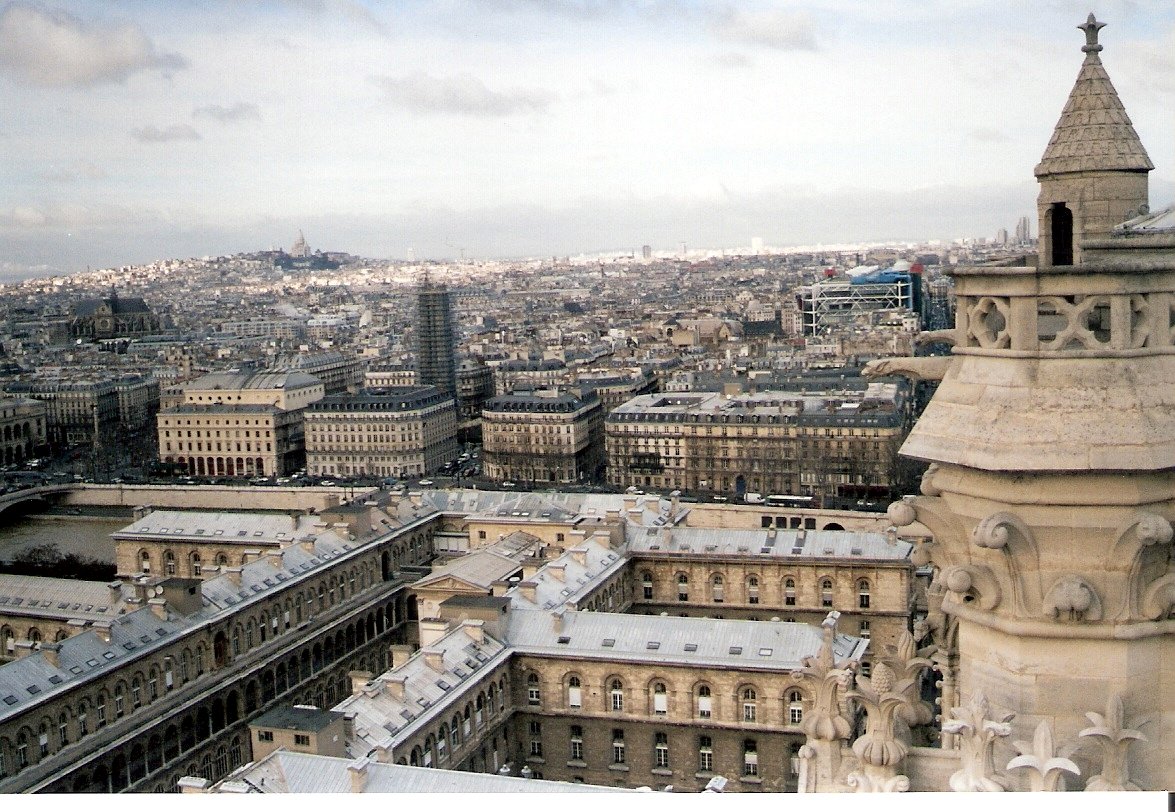
But a better view was from another section, with the stunning whiteness of the domes of Notre Dame calling me back to their hilltop.
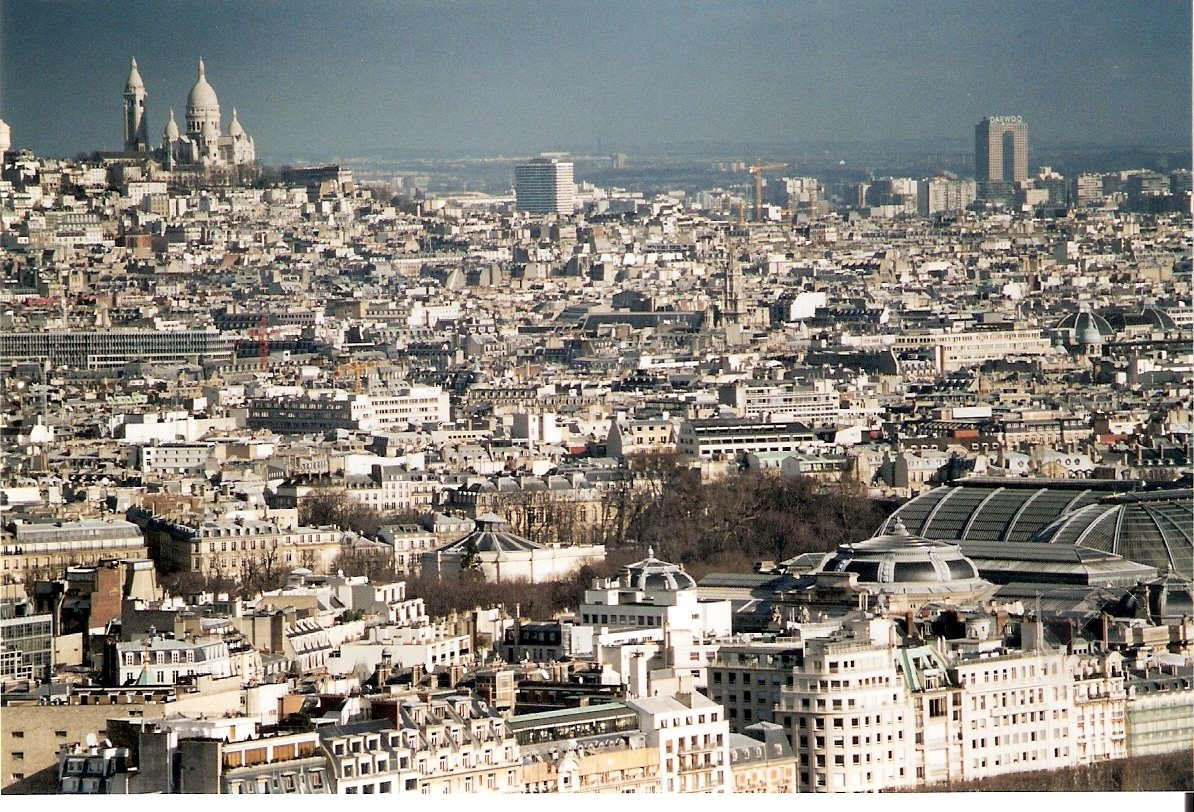
In the other direction there is the Eiffel Tower and when I was there, the January Seine muddiness coloured the river as it flowed past 10 of the 20 'arrondisements,' or districts, of the city.
The Seine is a busy commercial waterway and brings with it the mud of flooding upstream. It is not a good thing to think about when half of the water used in Paris comes from the river - cleaned first of course.
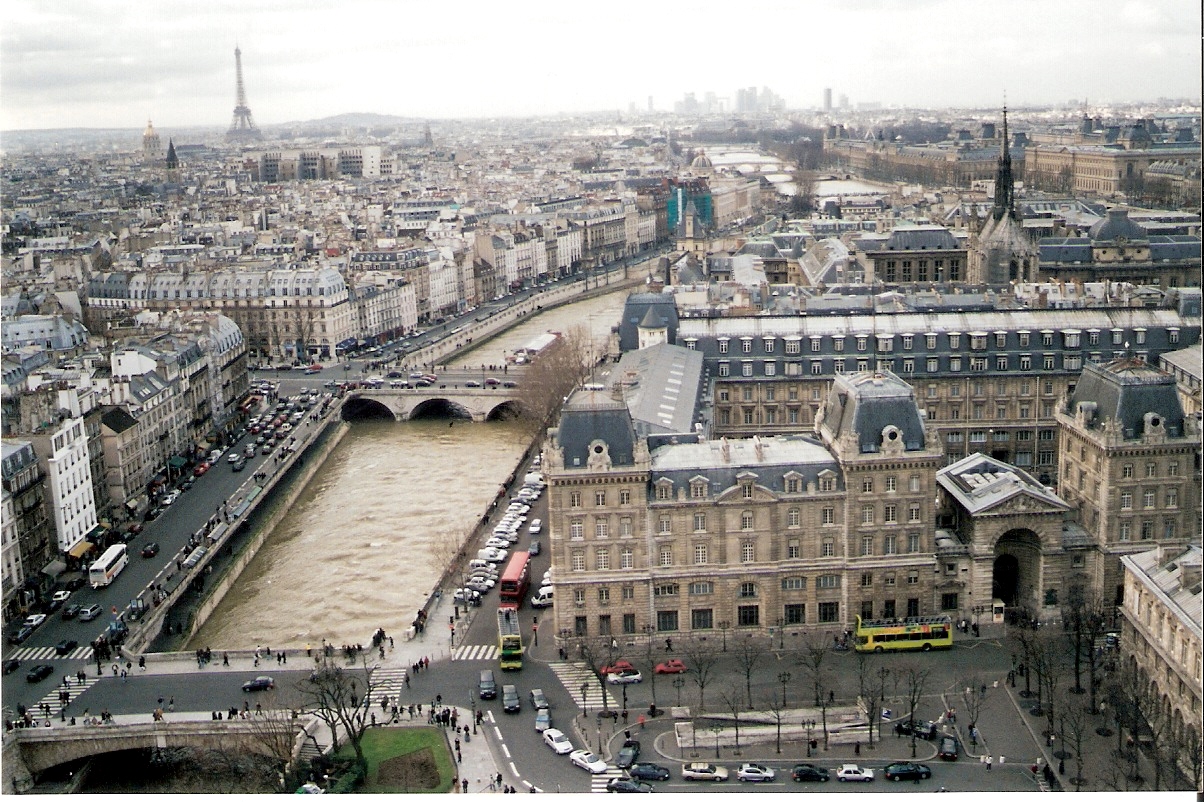
Haussmann's Paris
below the Notre Dame Cathedral Tower
From every direction from the top of the tower there is a visual feast reflecting Haussmann’s layout of the city.
Georges-Eugène, 1st Baron Haussmann was actually educated as a lawyer, but being a good musician, he concurrently studied music at the Paris Conservatorium of Music. These studies seem a strange background for his future role in civic planning when he became Prefect of the Seine Département.
In this capacity, he was undaunted in securing the funding for his massive rebuilding of the boulevards, the twelve grand avenues radiating from the Arc de Triomphe, La Défense, the Grande Arche, and the street facades of Paris (plus the sewers beneath): all started under the reign of Napoleon III.
Haussmann eventually ran foul of the government for the vast cost of his massive renovations and his place in history varies according to one’s perspective.
Some see Hausemann as the person who destroyed medieval Paris, and some see him as the architect of the new and much treasured city we now enjoy.
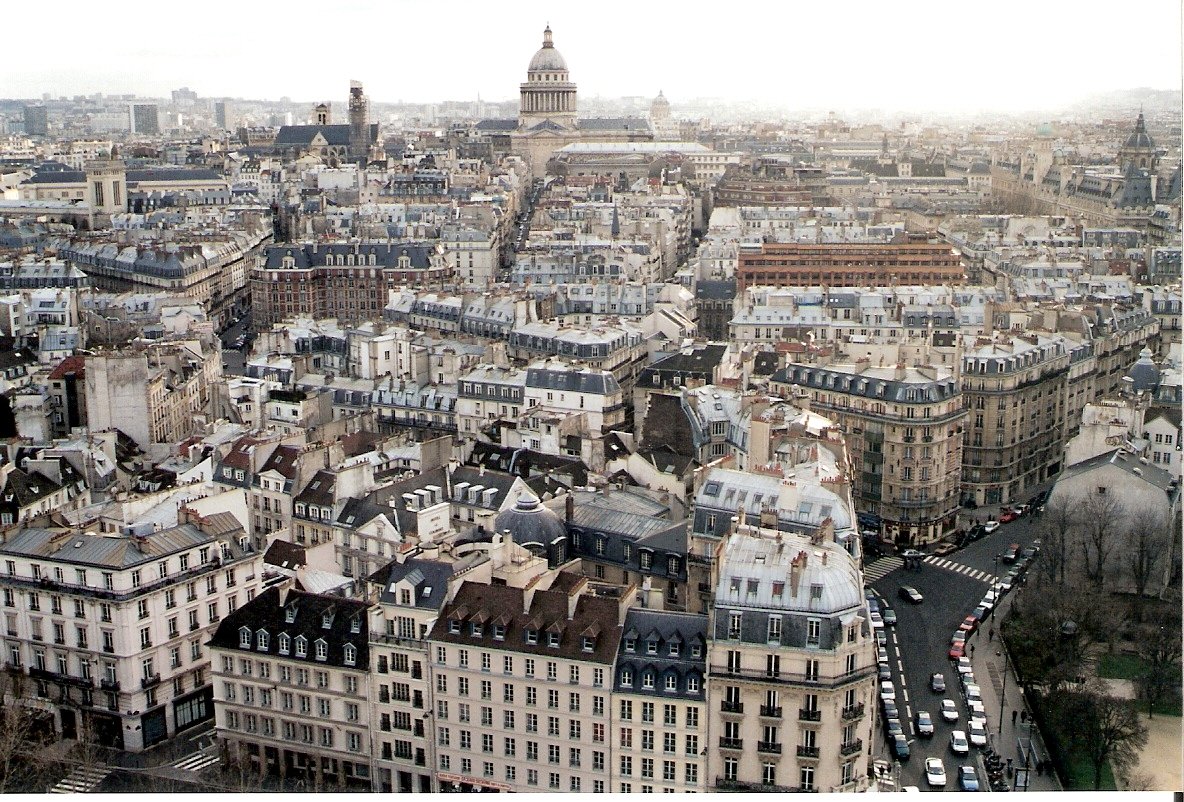
As you move around the parapets, the vastness of the Paris landscape is laid out for you to find all your favourite landmarks, but some of the most famous of all reside right there ahead of you.
The gargoyles
and other guardians of Notre Dame in Paris
As if you needed another incentive, many think the best reason for climbing all those steps is the chance to be ‘up close and personal’ with the gargoyles and other tower guardians.
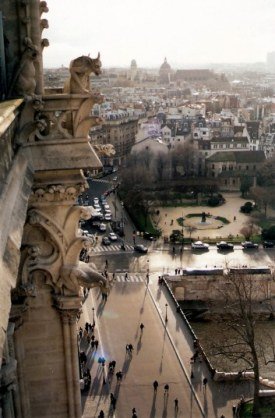
The term 'Gargoyle' comes from the Latin word 'gurgulio' – having the double meaning both of 'throat' and the gurgling noise made by water running through a drain pipe. This seems appropriate for the fact that the purpose of a true gargoyle is to project rain water far from the building through his open mouth. Gothic cathedrals usually required an army of gargoyles to handle the rainwater.
The fantastic and often weird creatures that often accompany gargoyles on their lofty perch, but don't usually serve irrigation purposes, are appropriately called 'grotesques'.
Popular history suggests that they were often malicious caricatures of people with whom either the person commissioning the work, or the artist, had a difference of opinion.
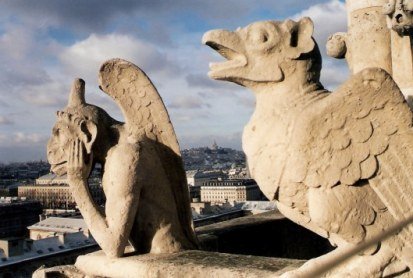
Not knowing the personalities on which they were modelled one can still recognise that their faces were designed to parody. All that we recognise now, is what a marvellous foil they make for the city of Paris over which they stare.
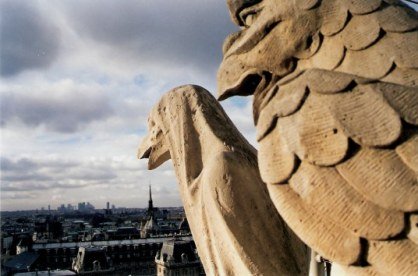
I am pleased to have made a passing acquaintance with them – grotesque and gargoyle alike.
They were on my list of 'Things to Do in Paris' and I found it somehow comforting later, to know that they watched over me as I explored the city, its monuments, and hidden places.
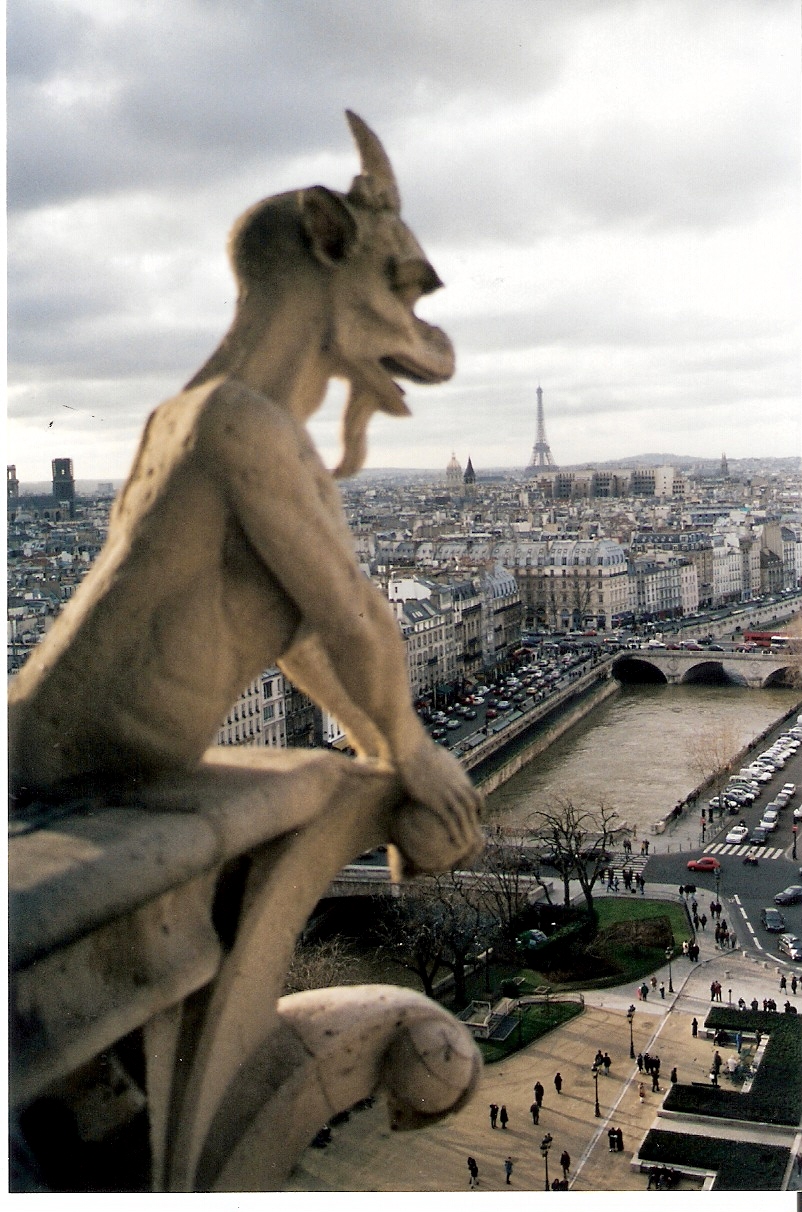
As Oliver Herford said in this ditty:
The Gargoyle often makes his perch
On a cathedral or a church,
Where, mid ecclesiastic style,
He smiles an early-Gothic smile
The Bells of Notre Dame Cathedral in Paris recreated and returned
To mark the 850th anniversary of this grand old lady of Paris, a new a set of bells for its bell tower was been created. These were carefully cast to faithfully reproduce the sound of beautifully tuned bells that once rang out from Notre Dame to mark the quarter hours of Paris. The originals were melted down to make cannon balls during the French Revolution.
These replacements were cast at the Cornille-Havard Foundry in the small town of Villedieu-les-Poeles, Normandy in the north of France. The process followed medieval techniques: a mixture of 78% copper and 22% tin being melted in a furnace of wood and coal, and then poured into traditional moulds made of clay, horse droppings, and goat hair.
Those fortunate enough to be in Paris at the time they arrived to be blessed, could join residents to meet the bells before they were hung - a rare, and historic privilege.
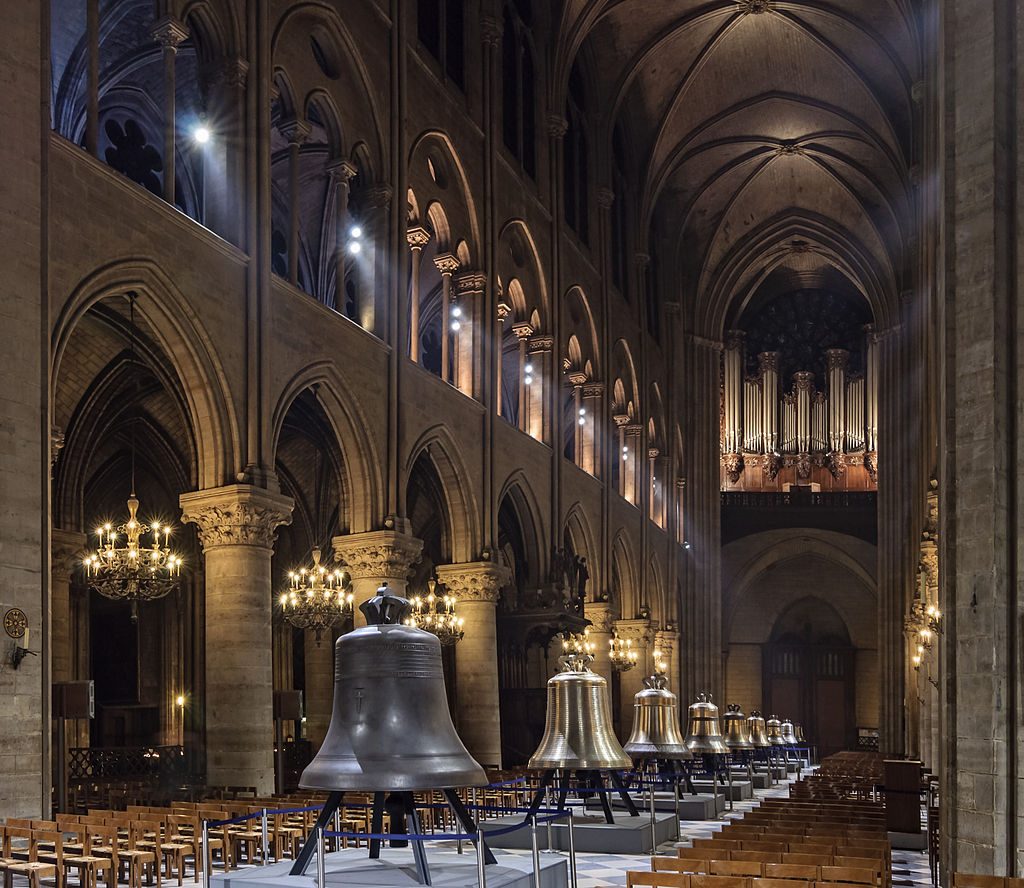
Thanks for the wonderful photo from: Myrabella/Wikimedia Commons/CC BY-SA 3.0
This file is licensed under the Creative Commons Attribution-Share Alike 3.0 Unported license.
The bells of Notre Dame Cathedral Paris
by name
Happily, the wonderful bells of Notre Dame survived the fire and as of the time of writing in 2025, are still undergoing cleaning although they still hang in the belltowers. Listen to them here.
The survivor:
Emmanuel the great bell of Notre Dame
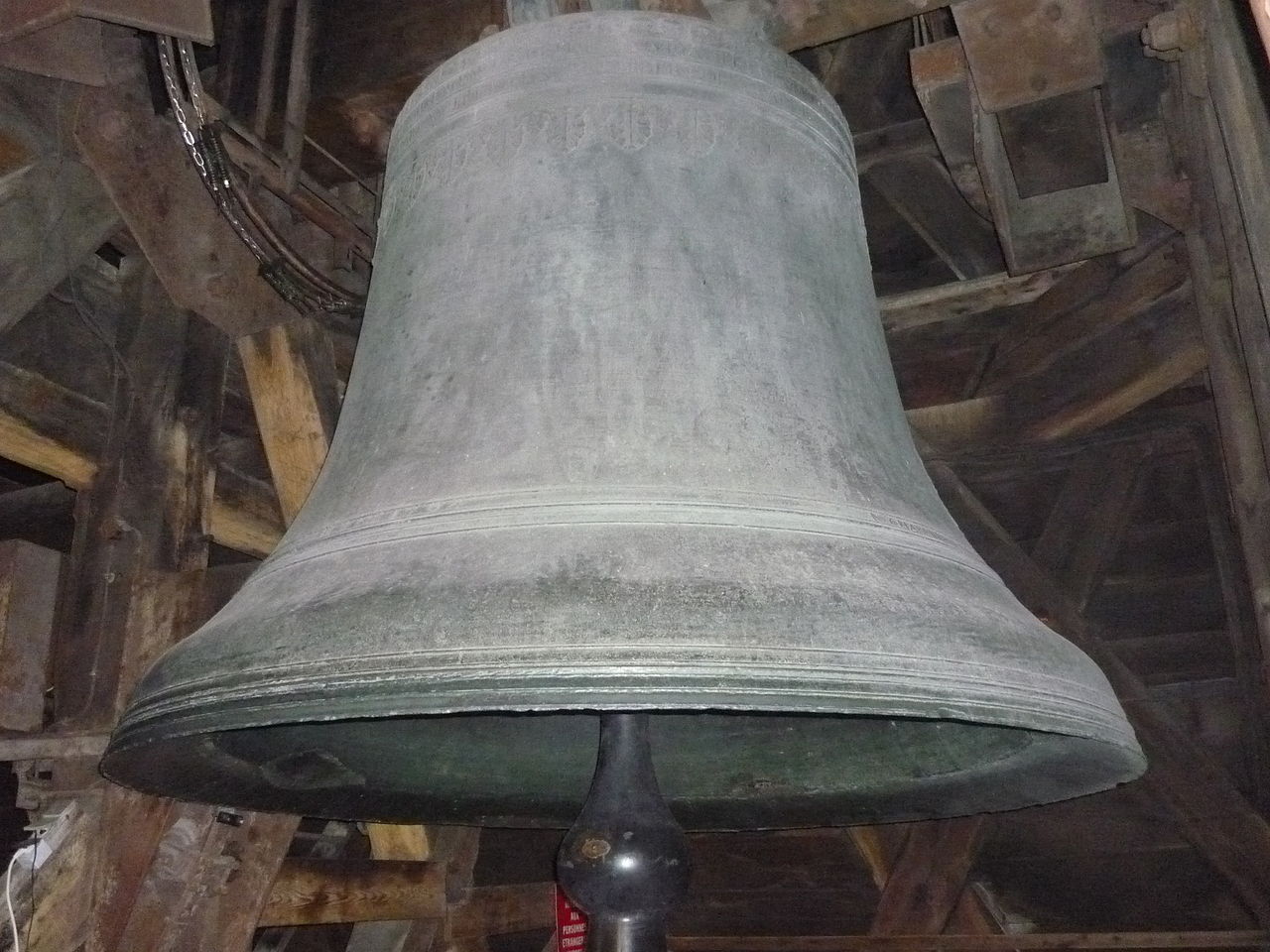
The new set joined the only surviver of the destruction during the Revolution: the 'bourdon' or great bell called Emmanuel.
Emmanuel once had a partner called Marie, and her replacement, also called Marie, was cast in the Netherlands before being sent to Normandy to be tuned with her colleagues.
Emmanuel was rehung by Napoleon and has been the stalwart through ensuing centuries.
Photo courtesy of Wikimedia Commons: de:Freedom_Wizard [CC BY 3.0 (https://creativecommons.org/licenses/by/3.0)]
Farewell to Angélique-Françoise, Antoinette-Charlotte, Hyacinthe-Jeanne, and
Denise-David - who with inferior manufacturing,
still rang loyally, if discordantly, for centuries
As we welcomed the return of harmony from the bell tower of Notre Dame, we still treasure the service of all the old friends - those bells that shouldered the burden of ringing out - even discordantly, for so many centuries.
Angélique-Françoise, Antoinette-Charlotte, Hyacinthe-Jeanne, and Denise-David were the bells so much derided for their poor quality, and who have met their fate in being melted down for scrap. Named for saints, these old friends nonetheless did the job in the absence of others. We should also celebrate them. Their new, more sonorous replacements are companions to Emmanuel to share the responsibilities of ringing out above Paris.
The job that our retiring friends have done alone is now supplemented to make up the original number of ten bells in the Notre Dame Bell Tower.To meet and get to know Emmanuel, Gabriel, Anne-Geneviève, Denis, Marcel, Étienne, Benedict-Joseph, Maurice, and Jean-Marie, here is your introduction to them and explanations of when they are rung.
The old bells may not have made great music. Their sound may have inspired Victor Hugo's Quasimodo, but those departing bells did the job for centuries, and for centuries their peel was good enough to mark the quarter hours and ceremonial occasions with a sort of discordant character that had its own peculiar personality.
Over all those years the words of Leonard Cohen could have been the mantra of the bells of Notre Dame :
Ring the bells that still can ring
Forget your perfect offering.
There is a crack in everything.
That’s how the light gets in.
For more Paris pages:
Tulieries Gardens






